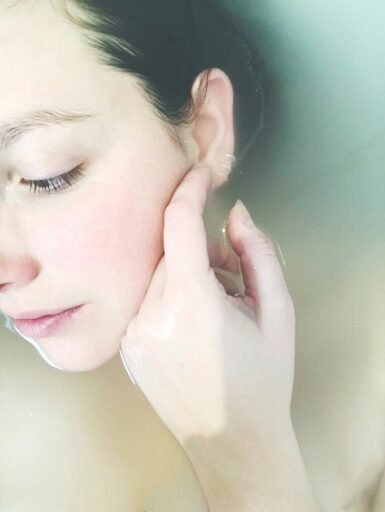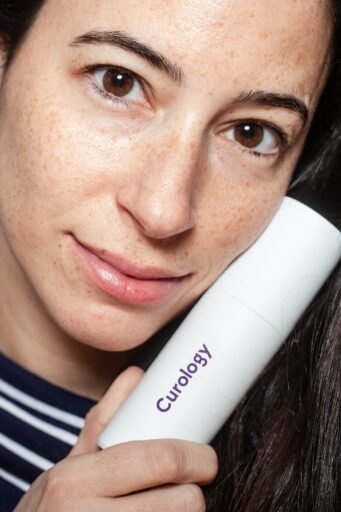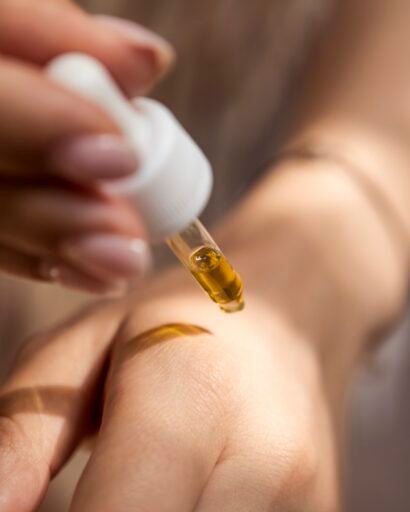Living with anxiety can come with a range of physical symptoms, and one of them is the infamous anxiety rash. This skin condition, which often appears as red, itchy patches on various parts of the body, can add to the distress already experienced by those grappling with anxiety. Understanding what anxiety rash looks like is crucial in order to seek proper treatment and relief. In this article, we will explore the visual characteristics of anxiety rash, its causes, and potential remedies to help you navigate and manage this aspect of anxiety.
What Does Anxiety Rash Look Like
Understanding Anxiety Rash
Anxiety rash, also known as stress-induced rash or psychosomatic rash, refers to skin conditions that are triggered or worsened by anxiety and stress. When you are anxious or stressed, your body releases hormones that can affect your immune system and blood vessels, leading to various skin reactions. Understanding what anxiety rash looks like can help you identify and manage this common manifestation of anxiety.

Common Symptoms of Anxiety Rash
Anxiety rash can present itself in different ways, depending on the individual and the underlying cause. However, there are some common symptoms that are often associated with anxiety-related skin conditions.
Redness
One of the most common symptoms of anxiety rash is redness, which can appear as patches or areas of flushed skin. The redness may be accompanied by a warm sensation and can vary in intensity. This redness is often a result of increased blood flow to the affected areas due to the body’s stress response.
Itching and Irritation
Another common symptom is itching and irritation. People with anxiety-related rashes may experience intense itching, which can be very uncomfortable and may lead to scratching. The excessive scratching can further aggravate the skin and potentially lead to more severe symptoms.
Raised Bumps or Hives
Anxiety rash can also manifest as raised bumps or hives on the skin. These bumps may be small or larger in size and can occur in clusters or spread across different areas of the body. The appearance of hives is often associated with an allergic reaction triggered by the stress response.
Skin Blotches or Discoloration
In some cases, anxiety rash can cause skin blotches or discoloration. These patches may appear darker or lighter than the surrounding skin and can be more noticeable when experiencing a stressful event or during periods of heightened anxiety. The discoloration is a result of the disruption to the normal functioning of melanocytes, which are responsible for producing skin pigmentation.
Dryness or Flaky Skin
Anxiety rash can also lead to dryness or flaky skin. This symptom is particularly common in individuals with pre-existing skin conditions, such as eczema or psoriasis, which can be aggravated by anxiety and stress. Dry and flaky skin can further contribute to itchiness and discomfort.

Different Types of Anxiety Rashes
Anxiety rashes can manifest in various forms, and it is essential to understand the different types to accurately identify and manage them.
Urticaria (Hives)
Urticaria, commonly known as hives, is a type of anxiety rash characterized by itchy and raised bumps on the skin. The hives can vary in size and shape and often appear suddenly and disappear within a few hours. They are typically triggered by the release of histamine, a chemical produced by the body in response to stress or anxiety.
Eczema
Eczema, also referred to as atopic dermatitis, is a chronic skin condition characterized by dry, itchy, and inflamed skin. While eczema can have various triggers, including allergens and irritants, anxiety is recognized as a significant factor in flare-ups and the worsening of symptoms. Anxiety-related eczema often affects the face, hands, and other areas that are prone to dryness.
Psoriasis
Psoriasis is a chronic autoimmune disease that causes the rapid buildup of skin cells, resulting in thick, red, and scaly patches. It is commonly associated with genetic factors, but stress and anxiety are known to trigger or exacerbate psoriasis flare-ups. Anxiety can stimulate the immune system, leading to increased inflammation and the development of psoriatic lesions.
Acne
While acne is predominantly caused by hormonal factors and bacteria, research has shown that stress and anxiety can also influence its development and severity. Anxiety triggers the release of stress hormones, such as cortisol, which can increase oil production, clog pores, and contribute to the formation of acne breakouts.
Contact Dermatitis
Contact dermatitis is a skin irritation or rash that occurs when the skin comes into contact with a substance that triggers an allergic or irritant reaction. While not directly caused by anxiety, individuals with anxiety disorders may be more susceptible to developing contact dermatitis due to the disruption to the immune system and heightened sensitivity to environmental factors.

Prevention and Management of Anxiety Rash
Addressing anxiety and stress is crucial for preventing and managing anxiety rash. Here are some strategies that can help:
Stress Reduction Techniques
Engaging in stress reduction techniques, such as deep breathing exercises, meditation, yoga, or mindfulness practices, can help calm the mind and alleviate anxiety. Finding activities that promote relaxation and provide an outlet for stress can significantly improve overall well-being and reduce the likelihood of anxiety rash flare-ups.
Healthy Lifestyle Practices
Maintaining a healthy lifestyle can also contribute to stress management and the prevention of anxiety rash. Regular exercise, a balanced diet, adequate sleep, and avoiding triggers like caffeine and alcohol can positively impact anxiety levels and promote healthy skin.
Effective Anxiety Management Strategies
Working with a mental health professional to develop effective anxiety management strategies is fundamental in preventing and managing anxiety rash. Cognitive-behavioral therapy (CBT), relaxation techniques, and other evidence-based treatments can help individuals cope with anxiety and reduce the likelihood of skin reactions.
Seeking Professional Help
If anxiety rash persists or significantly impacts your daily life, it is essential to seek professional help. A dermatologist can help diagnose and treat underlying skin conditions, while a mental health professional can provide support and guidance in managing anxiety and stress.
In conclusion What Does Anxiety Rash Look Like
Anxiety rash can manifest in various ways, such as redness, itching, hives, skin discoloration, or dryness. Understanding the different types of anxiety rashes, including urticaria, eczema, psoriasis, acne, and contact dermatitis, can aid in their identification and management. Applying stress reduction techniques, adopting healthy lifestyle practices, and seeking professional help are essential steps in preventing and effectively managing anxiety rash. Remember, you are not alone, and there are resources available to support you in your journey towards better skin and mental well-being.
Frequently Asked Questions:
Q1: How do I know if I have an anxiety rash?
Anxiety rashes often present as red, raised, or bumpy skin. If you notice such changes during times of heightened stress, it’s advisable to consult a dermatologist for a proper diagnosis.
Q2: How long do stress rashes last?
The duration of stress rashes varies. Some may resolve quickly, while others may persist. If the rash persists or worsens, seeking medical advice is recommended.
Q3: What is the best medicine for anxiety rash?
Over-the-counter antihistamines or topical corticosteroids may provide relief for mild anxiety-induced rashes. However, consulting with a healthcare professional is crucial for personalized recommendations.
Q4: What do stress bumps look like?
Stress bumps can manifest as small, red, itchy bumps on the skin. Their appearance may resemble hives or welts. Seeking professional advice can help determine the cause and appropriate treatment.
Q5: Is anxiety rash itchy?
Yes, anxiety rashes can be accompanied by itching. Managing stress and using soothing creams may help alleviate discomfort.
Q6: Are anxiety rashes bad?
While anxiety rashes are typically harmless, persistent or severe cases may require medical attention. Consulting with a dermatologist ensures proper evaluation and guidance.
Q7: Can emotional stress cause rashes?
Yes, emotional stress can trigger skin reactions, including rashes. Managing stress through relaxation techniques and seeking emotional support may contribute to improved skin health.
Q8: Why am I suddenly getting stress rashes?
Sudden onset of stress rashes may be linked to heightened emotional or environmental stressors. Identifying and addressing stressors, along with skincare measures, can be beneficial.
Q9: How can I stop getting stress rashes?
Effective stress management techniques, such as mindfulness, exercise, and seeking emotional support, can contribute to reducing stress-related skin reactions. Additionally, maintaining good skincare practices is essential.
Q10: What calms down a rash?
Cool compresses, over-the-counter creams, and avoiding irritants can help calm a rash. Consultation with a dermatologist ensures appropriate care for specific skin conditions.
Q11: How do you treat anxiety skin?
Treating anxiety-related skin issues involves a holistic approach, including stress management, skincare practices, and, if needed, medications prescribed by a healthcare professional.
Q12: What does anxiety itching look like?
Anxiety itching may present as persistent, unexplained itching without visible skin changes. Consulting with a dermatologist helps rule out underlying skin conditions.
Q13: How do you know if your spots are from stress?
Connecting spots to stress involves considering timing and emotional factors. A dermatologist’s evaluation can provide clarity on whether stress contributes to skin issues.
Q14: When should you get a rash checked out?
If a rash persists, worsens, or is accompanied by other concerning symptoms, seeking prompt evaluation from a healthcare professional is advised.
Q15: Does stress change your face?
Prolonged stress may contribute to facial changes, including increased tension, fine lines, and skin sensitivity. Adopting stress-reduction practices can positively impact overall skin health.
Sources:
- Source 1. What Does Anxiety Rash Look Like
- Source 2. Anxiety
- Source 3. Anxiety Treatment
- Source 4. Anxiety Symptoms
- Source 5. Anxiety Medication